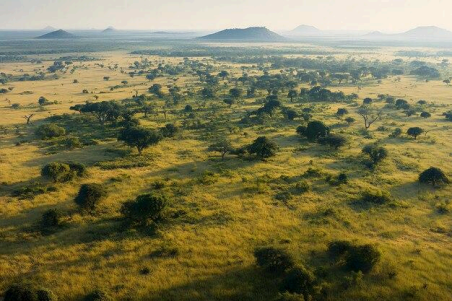
Carbon sequestration is the natural or artificial process of capturing and storing atmospheric carbon dioxide. It is a critical strategy in mitigating climate change because it helps reduce the amount of greenhouse gases in the atmosphere, slowing global warming.
Carbon sinks are natural systems that absorb more carbon than they release. These include forests, soils, oceans, and marine vegetation. Marine plants, specifically seagrass meadows and algae beds, play an important role in sequestration. They capture carbon dioxide through photosynthesis and store it in their biomass and the surrounding sediment for hundreds to thousands of years, making them some of the most effective natural carbon sinks on the planet.
Seagrass meadows, though covering less than 0.2% of the ocean floor, are responsible for storing up to 18% of the ocean’s carbon. They can sequester carbon up to 35 times faster than tropical rainforests, locking away around twice as much carbon per hectare each year.
Savanna and woodland ecosystems can capture up to 8 tonnes of carbon dioxide per hectare each year. Over time, forests accumulate carbon in their trees, shrubs, and soils, storing up to 150 tonnes of carbon per hectare. Therefore, reforestation of degraded land significantly boosts carbon storage capacity and supports climate mitigation.
The destruction of forests and marine vegetation releases stored carbon back into the atmosphere as carbon dioxide, thus contributing to climate change. Deforestation not only reduces the number of trees available to absorb carbon but also disrupts ecosystems, leading to soil erosion and loss of biodiversity. Similarly, the loss of seagrass meadows, kelp forests, algae beds, and other marine vegetation decreases the ocean’s ability to store carbon and weakens coastal protection against storms and erosion. These losses accelerate global warming and undermine efforts to stabilize the climate.
Protecting and restoring natural carbon sinks is essential to combating climate change. Nature-based solutions, such as Climate Wise’s projects at the Imire Rhino and Wildlife Conservancy in Zimbabwe and its Bermuda Seagrass Project, demonstrate how working with ecosystems can create lasting environmental and social benefits. By supporting rewildling, reforestation, and the safeguarding of vital coastal habitats, these initiatives not only capture carbon but also protect biodiversity. Continued support and investment in such solutions is crucial to building a sustainable, climate-resilient future.






